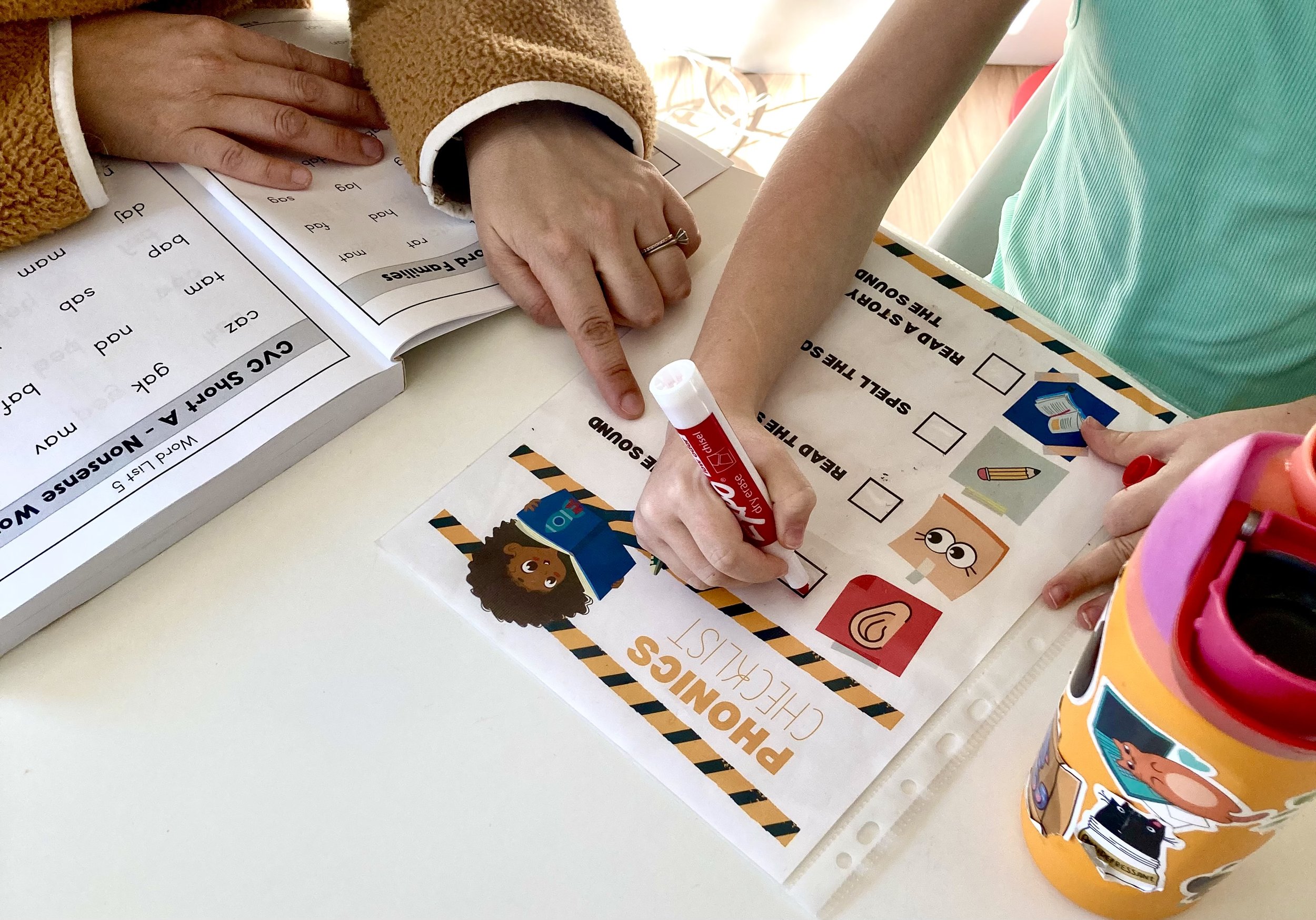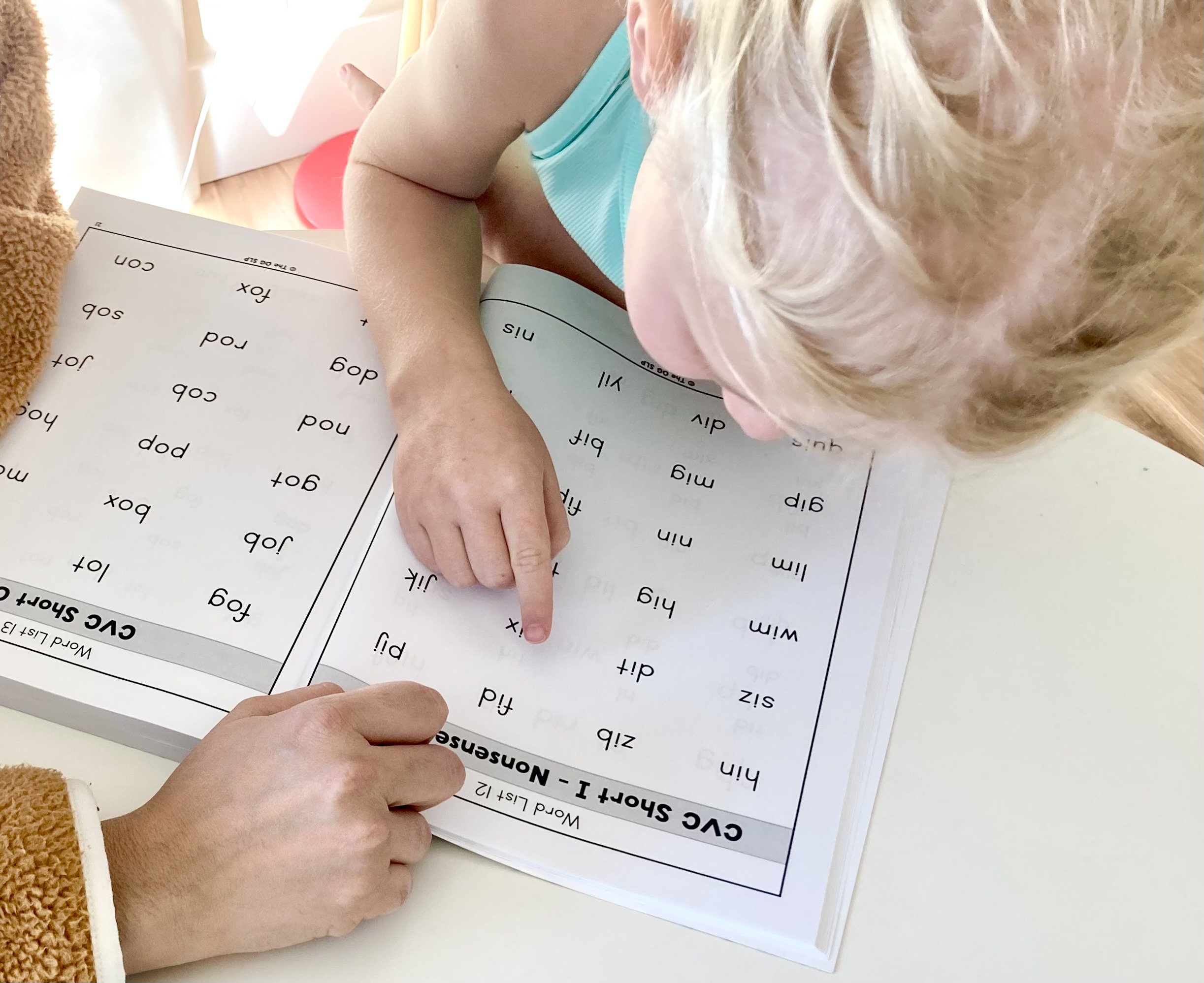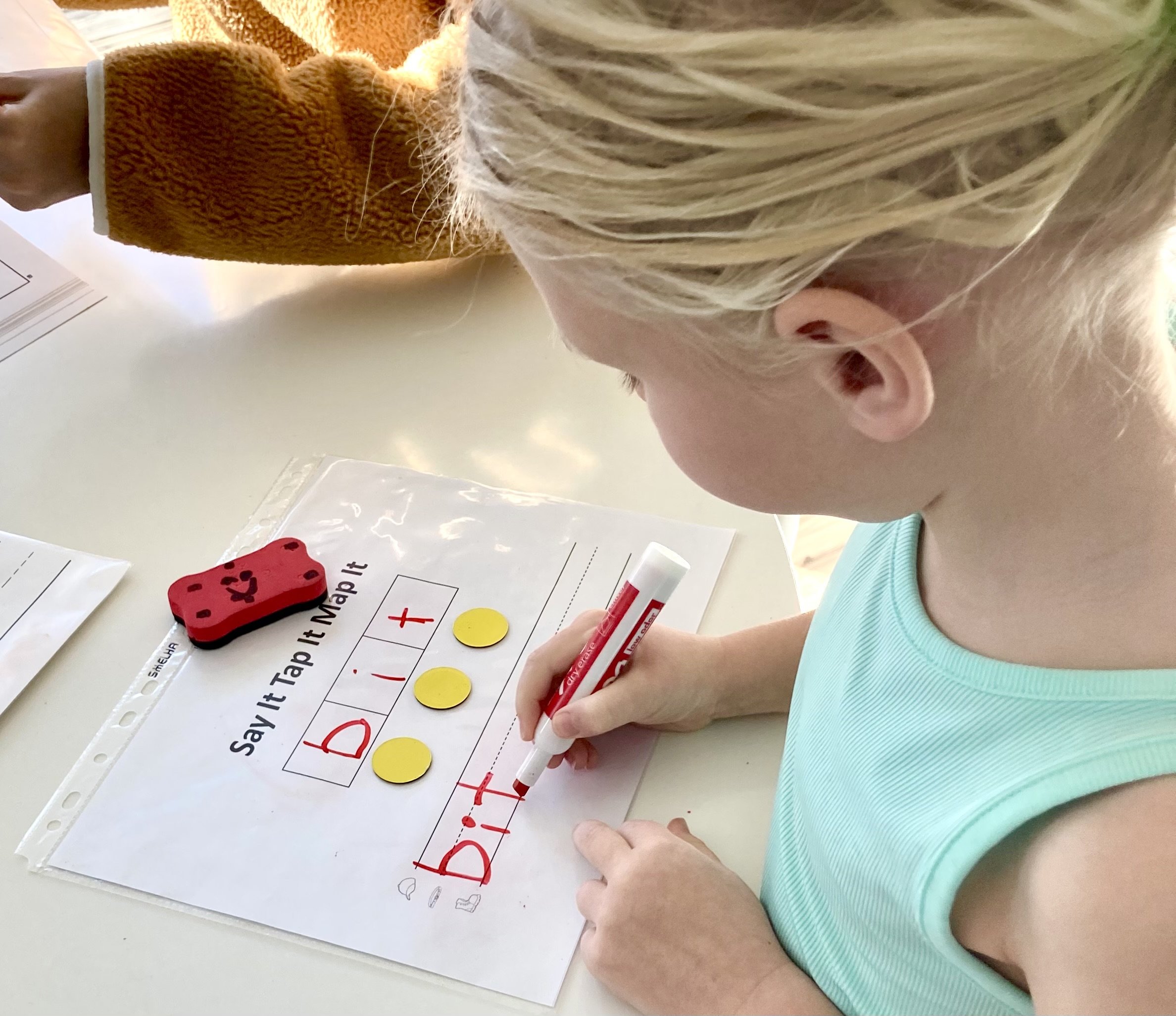Teach Your Child to Read in 20 Minutes a Day
“He's really bright, but sometimes he struggles to stay focused and tends to lose interest."
"I work full-time, so I don't have the extra hours to dedicate to homeschooling.”
"I find it challenging to keep her engaged for a whole lesson.”
It's totally normal to have these feelings when you start helping your child with their reading journey. Learning to read is a complex process in the brain, and it can be tricky to figure out exactly what your child needs, all while keeping things fun and engaging.
When a child is learning to read, several areas of their brain come into play. To keep it simple, let’s think of these areas as the sound part, the meaning part, and the visual part. It's important to activate and exercise each of these parts during a reading lesson, so the child can really understand and read a word.
I created the Phonics Checklist to cover the essential areas in a reading lesson. It engages all aspects of a child's reading brain and allows them to track their lesson progress, which is motivating to them. The checklist provides a solid foundation for an effective lesson while giving parents the freedom to customize activities for their child.
Listen for the Sound (2-3 min.)
In this section, we dive into the sound region of the brain. It's all about helping children hear the specific sound they’re learning to read in different words.
Example:
Teacher: “We are going to learn about the short i sound /ǐ/ as in kit. Before we begin, I need to make sure that you can hear this sound in different words. I am going to read a list of words to you. If the word has the /ǐ/ sound I want you to give me a thumbs up. If the word does not have the /ǐ/ sound give me a thumbs down.”
Teacher: “sit”
Student: Thumbs Up
Teacher: “cat”
Student: Thumbs Down
There are a lot of variations of activities that can be done for this part of the lesson. For an in-depth look at the Sounds of English and sound activities check out my Sounds of English online course.
Read the Sound (5 min.)
This section focuses on reading words with the targeted sound in isolation, engaging both sound and visual areas of the brain. Activities may include having a child read from a list of words or using magnet letters to form and read words. Children can read both real and nonsense words, as the goal is to practice reading words with the targeted sound outside of any context.
Example:
Teacher: “Now that we have heard the short /ǐ/ sound in words we are going to read words that have this sound in it. The words that I am going to show you are ‘make believe’ words meaning they are not real words, so don’t worry if you do not recognize the word after you read it.”
Word List: hin, zib, fid, pij, siz, dit, nix
Spell the Sound (5 min.)
This section often lacks the attention it deserves. Many educators separate spelling and reading, but Pam Allyn captures the essence perfectly: “Reading and writing cannot be separated. Reading is breathing in; writing is breathing out.” Children need the opportunity to both decode (read) and encode (spell) the sound they are learning to read. Both the sound and visual parts of the brain are activated during these activities.
Example:
Teacher: “Now that we have listened for the short /ǐ/ sound in words and read words with the short /ǐ/ sound we are going to build, or spell, words with the short /ǐ/ sound. I am going to say the word and you will repeat the word back to me.”
Teacher: “bit”
Student: “bit”
Teacher: “How many sounds do you hear in ‘bit’?”
Student: “/b/ /i/ /t/ I hear three sounds.”
Teacher: “If we have three sounds in this word then we are going to need three letters or letter combinations to build this word.”
Teacher: “What letter or letters make the /b/ sound?”
Student: “B”
Teacher: “Great, write that letter down. Now, What letter or letters make the /ǐ/ sound?”
Student: “I”
Teacher: “Now say and write the letter or letters that make the /t/ sound.”
Student: “T”
Teacher: “Now write the whole word.”
Read a Story With the Sound (5 min.)
At the end of the lesson, it’s important to connect the words your child has been practicing in isolation with a decodable text or sentence. Decodable texts are stories that use words with the targeted sound you’re teaching. These texts also include words that have sounds your child has already learned. Reading in context helps activate the meaning part of the brain, making it easier for your child to fully grasp the sound you’re teaching. It’s a great way to activate all three parts of the reading brain at once.
Example:
Teacher: “Now that we’ve listened for, read, and spelled words with the short /ǐ/ sound, we are going to read a story that has lots of short /ǐ/ words in it.”
Student: Reads decodable text or sentence with short /ǐ/ words.
That's all there is to it! Reading lessons don’t have to be overly complicated, but they should be designed to engage all parts of the reading brain. Using this checklist will help set your child on the path to becoming a confident reader and speller.
Resources Used in This Post
This resource provides word lists for the phonics skills you're teaching, including both real and nonsense words for each skill.
This page contains affiliate links. If you click and make a purchase, I earn a commission at no extra cost to you. All opinions are my own.








